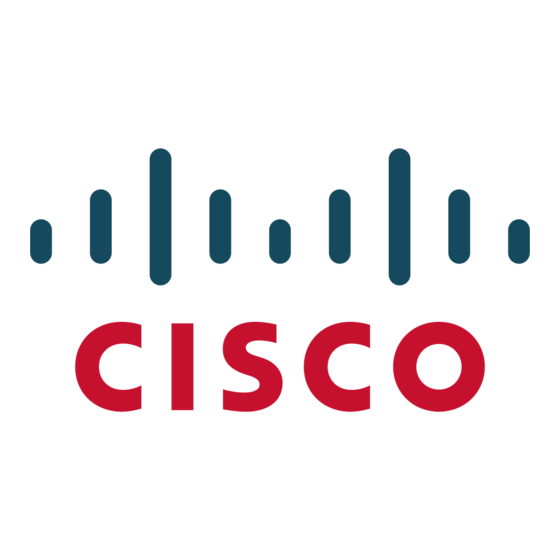Cisco Catalyst 3550 Series Veri Sayfası - Sayfa 10
Anahtar Cisco Catalyst 3550 Series için çevrimiçi göz atın veya pdf Veri Sayfası indirin. Cisco Catalyst 3550 Series 21 sayfaları. Ios software release 12.1(14)ea1
Ayrıca Cisco Catalyst 3550 Series için: Çözüm Kılavuzu (17 sayfalar), Ürün Destek Bülteni (6 sayfalar), Sorular ve Cevaplar (9 sayfalar), Ürün Destek Bülteni (6 sayfalar), Manuel (19 sayfalar)

Feature
Scalability
Network-wide security features
All contents are Copyright © 1992–2002 Cisco Systems, Inc. All rights reserved. Important Notices and Privacy Statement.
Benefit
• Per VLAN Spanning Tree Plus (PVST+) allows for Layer 2 load-sharing on
redundant links to efficiently use the extra capacity inherent in a
redundant design.
• Equal-cost routing for Layer 3 load-balancing and redundancy.
• Local Proxy ARP works in conjunction with private VLAN edge to minimize
broadcasts and maximize available bandwidth.
• VLAN Trunking Protocol (VTP) pruning limits bandwidth consumption on
VTP trunks by flooding broadcast traffic only on trunk links required to reach
the destination devices.
• Internet Group Management Protocol (IGMP) snooping provides for fast
client "joins" and "leaves" of multicast streams and limits
bandwidth-intensive video traffic to only the requestors.
• Multicast VLAN registration (MVR) continuously sends multicast streams in
a multicast VLAN while isolating the streams from subscriber VLANs for
bandwidth and security reasons.
• The Cisco CWDM GBIC solution support allows for the scaling of bandwidth
without deploying additional fiber. It provides scalability of up to eight
Gigabits of bandwidth on a pair of single-mode fibers to reach the distances
up to 100–120 km.
• Support for up to 4,096 VLAN Ids with 1,005 active VLANs per switch; and
up to 128 spanning tree instances per switch.
• VLAN trunks can be created from any port using either standards-based
802.1Q tagging or the Cisco ISL VLAN architecture.
• IEEE 802.1x for dynamic port-based security.
• Cisco security VLAN ACLs (VACLs) on all VLANs to prevent unauthorized
data flows to be bridged within VLANs.
• Cisco standard and extended IP security Router ACLs (RACLs) for defining
security policies on routed interfaces for control plane and data plane traffic.
• Port-based ACLs for Layer 2 interfaces allows security policy to be applied
on per-Layer 2 port basis.
• Time-based ACLs allow the implementation of security settings during
specific periods of the day.
• Private VLAN edge provides security and isolation between ports on a
switch, ensuring that voice traffic travels directly from its entry point to the
aggregation device through a virtual path and cannot be directed to a
different port.
• TACACS+ and RADIUS authentication to enable centralized control of the
switch and restrict unauthorized users from altering the configuration.
• Port security secures the access to a port based on the MAC address of a
user's device and prevents unauthorized stations from accessing the switch.
The aging feature provides the capability to limit the number of concurrent
devices per port.
• Multilevel security on console access prevents unauthorized users from
altering the switch configuration.
Cisco Systems, Inc.
Page 10 of 20
